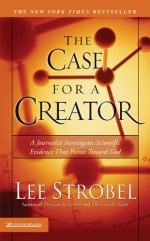|
This section contains 1,155 words (approx. 3 pages at 400 words per page) |

|
Summary
In Chapter 10: The Evidence for Consciousness: The Enigma of the Mind, Strobel related that Darwinian supporter Thomas Huxley noted in 1871 that consciousness was merely a function of matter, “when that matter has attained a certain degree of organization (Huxley, 248).” Scientists and thinkers have long attempted to account for consciousness, ranging from Wilder Penfield, father of modern neurosurgery, who believed it emanated from neural activities in the brain –only to discover that the brain and the mind (consciousness) interacted but are distinct from one another. To Penfield, this was proof of spirit as well as body. It confirmed a long line of thinkers, theologians, and philosophers who, going back centuries, believed consciousness was something not manifested in the body. A 2001 British study demonstrated consciousness continues after brain function has ceased at death.
To discuss consciousness, Strobel met with J. P. Moreland, PhD., a nuclear chemist...
(read more from the Chapters 10 – 11 Summary)
|
This section contains 1,155 words (approx. 3 pages at 400 words per page) |

|




